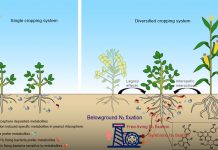Wu YH Wang FW Xiao X Liu JZ Wu CX Chen H Philip Kerr Jonathan Shurin. Seasonal changes in phosphorus competition and allelopathy of a benthic microbial assembly facilitate prevention of cyanobacterial blooms. Environmental Microbiology 2017 doi: 10.1111-1462-2920.13781
Abstract
Interactions among microbes determine the prevalence of harmful algal blooms that threaten water quality. These interactions can be indirectly mediated by shared resources or consumers or through interference by the production of allelochemicals. Allelopathic interactions and resource competition have been shown to occur among algae and associated microbes. However little work has considered seasonal influences on ecosystem structure and function. Here we report results of our investigations on seasonal changes in the interactions between benthic microbial assemblies and the bloom forming cyanobacterium Microcystis aeruginosa. We show that phosphorus (P) competition and allelopathy by the microbial assembly vary seasonally and inhibit growth of M. aeruginosa. The interactions per unit biomass of the microbial assembly are stronger under winter than summer conditions and inhibit the recruitment of the cyanobacteria thereby preventing the reoccurrence of cyanobacterial blooms in the following summer. The seasonality of these interactions correlates with changes in composition metabolic activity and functional diversity of the microbial assembly. Our findings highlight the importance of competitive and allelopathic interactions in regulating the occurrence of harmful algal blooms. Our results also imply that seasonal variation of competition and allelopathy of the microbial assembly might be beneficial to adjust aquatic ecosystem structure and function. This article is protected by copyright. All rights reserved.







